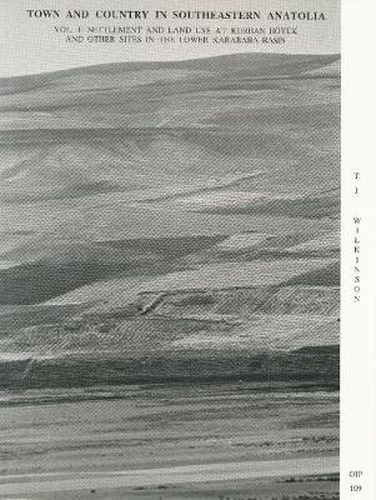Readings Newsletter
Become a Readings Member to make your shopping experience even easier.
Sign in or sign up for free!
You’re not far away from qualifying for FREE standard shipping within Australia
You’ve qualified for FREE standard shipping within Australia
The cart is loading…






This is a report on a detailed survey conducted within an area of 100 km2 along the south (left) bank of the River Euphrates (Firat Nehri) in southeastern Turkey. The survey provided a fourteen period sequence of settlement covering a span of 8,000 years. Population growth during the late Chalcolithic and the mid-late Early Bronze Age appears to have resulted in the gradual removal of woodland from the area. During the latter peak, a network of nodal settlements developed within cultivable lowlands, and formed part of a moderately well-integrated hierarchy of villages and small towns. Following a late Bronze Age-early Iron Age decline in visible remains of settlement, population again increased during the Seleucid-Hellenistic Period to reach a peak in the late Roman-early Byzantine times. By this time, all cultivable land was under either extensive or intensive cultivation and the limestone uplands probably formed rough pasture. There followed, during the seventh-tenth centuries AD, a remarkable decline in remains of sedentary occupation, which only recovered slightly in the Medieval period. Several hundred years of poorly documented settlement followed which culminated in the establishment, probably by the nineteenth century, of the modern network of settlements. A substantial growth in total cultivated area appears to have resulted from large-scale mechanization during the twentieth century.
$9.00 standard shipping within Australia
FREE standard shipping within Australia for orders over $100.00
Express & International shipping calculated at checkout
This is a report on a detailed survey conducted within an area of 100 km2 along the south (left) bank of the River Euphrates (Firat Nehri) in southeastern Turkey. The survey provided a fourteen period sequence of settlement covering a span of 8,000 years. Population growth during the late Chalcolithic and the mid-late Early Bronze Age appears to have resulted in the gradual removal of woodland from the area. During the latter peak, a network of nodal settlements developed within cultivable lowlands, and formed part of a moderately well-integrated hierarchy of villages and small towns. Following a late Bronze Age-early Iron Age decline in visible remains of settlement, population again increased during the Seleucid-Hellenistic Period to reach a peak in the late Roman-early Byzantine times. By this time, all cultivable land was under either extensive or intensive cultivation and the limestone uplands probably formed rough pasture. There followed, during the seventh-tenth centuries AD, a remarkable decline in remains of sedentary occupation, which only recovered slightly in the Medieval period. Several hundred years of poorly documented settlement followed which culminated in the establishment, probably by the nineteenth century, of the modern network of settlements. A substantial growth in total cultivated area appears to have resulted from large-scale mechanization during the twentieth century.